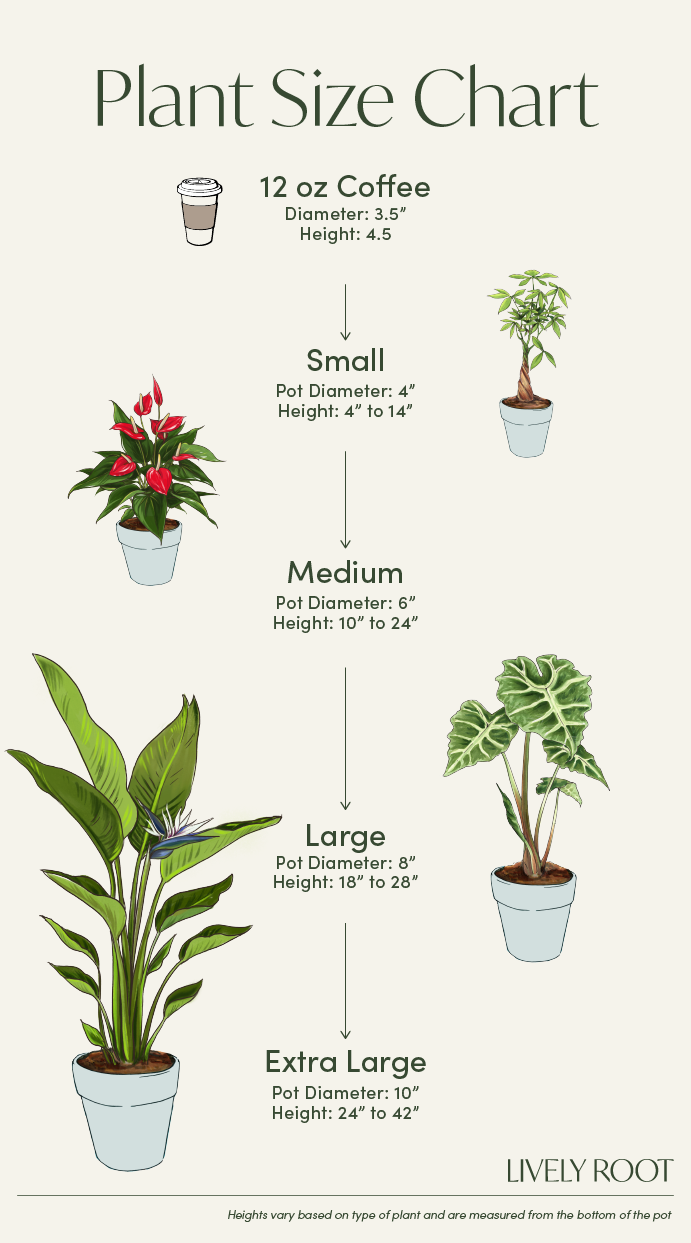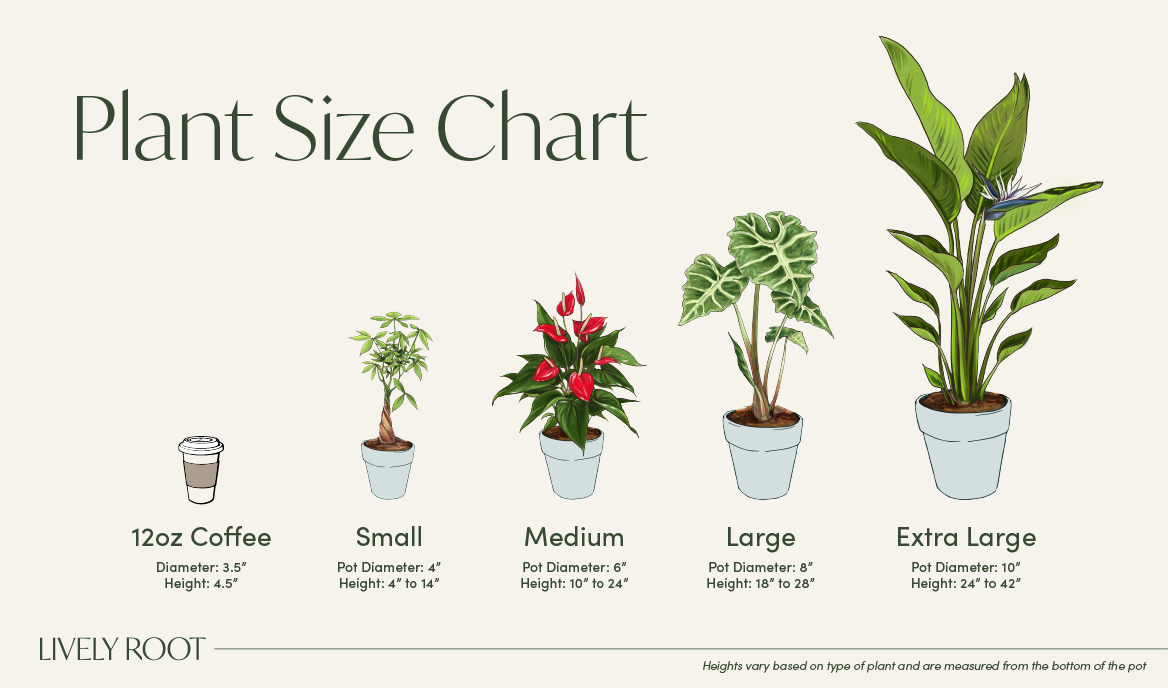

The much-loved Peperomia obtusifolia, also known as Baby Rubber Plant is one of our shiniest new plants and oh so cute! It looks perfect hanging in a container from a shelf or basket. Peperomia obtusifolia features deep-green, succulent-like foliage that stores moisture for longer. Its easy-care and pet-friendly nature make this beauty the perfect plant gift for friends and family.
Baby Rubber Plant Care & Buying Guide

Keep this plant in brightly lit conditions to help it thrive and grow fast.
Use unsoftened, filtered, bottled, or tap water sitting 24 hours to release the chemicals and water enough that the water discharges out of the drainage holes. Once the water is fully drained, replace it back into the cache or decorative pot. Let it dry between waterings and replenish the soil moisture when it falls below 3 on the plant meter.
Add a pebble tray under the grower pot to add humidity to the air. Group with several plants to raise the humidity. Mist with filtered, nonchlorinated water.
Keep this plant in rooms where the temperature is a comfortable 60°F-75°F and avoid cold drafts or air vents below 55°F.
This plant will not tolerate frost or temperatures below 60°F if left outside.
This plant has a small root system so too much fertilizer will burn the plant. You can fertilize three times a year in the spring, summer and fall. Apply at half-strength a balanced, liquid fertilizer especially formulated for indoor plants during the growing season and let it rest in the winter.
When receiving the Baby Rubber Plant, do not repot immediately but wait at least 6-12 months or if the roots are beginning to get crowded and growing through the drainage holes. Repot in the spring, using a 2 inches bigger pot to keep the roots drier. (Too big of a planter could cause the soil to dry slower.) Place a piece of screening at the bottom of the container over the drainage hole to secure the soil and allow it to drain. Use a well-draining indoor potting mix with perlite to help with drainage. Water your plant in the old pot before transferring over and let it sit an hour. Add succulent and cacti soil to the bottom to elevate the root ball. Lift the plant and release the roots against the existing planter. Use a clean knife or garden trowel to wedge between the pot and the soil to loosen. Inspect the root ball. Notice if there are any dead or rotting roots and trim off with sterile pruners. If the plant is rootbound, cut through the roots to alleviate continued encircling. Ensure the plant is sitting about 1 inch below the edge of the pot to avoid water spillage. Add more soil and backfill around the sides by tamping down. Fill up to the soil line but not over. Water thoroughly, leaving the soil damp but not soggy. If settling occurs, add more soil. Water well to dampen the soil and let it drain.
If it's time for a haircut, this one is easy to do. Use clean, sharp pruners and cut right above a node (where the new leaves will emerge). Shape it to your liking, or you can leave it to wind and trail down the side of the pot or hanging basket.
To propagate this plant during the growing season: Take a 4-6 inch stem cutting in the early spring. Use a knife or sharp pruners, cut below a node where there are at least three leaves. Remove the bottom leaves to expose the node. Let the stems heal for a couple of hours (the cut part will dry). Afterward, place the stem in a glass jar and fill it with filtered water and watch the roots grow! Replace and freshen the water each week. After the roots are six weeks old, add the cuttings to moistened succulent potting soil, continue to water, and give it the bright, indirect lighting requirements.
Baby Rubber Plant: Overview
The Baby Rubber Plant (Peperomia obtusifolia) is a bushy plant with oval, glossy green leaves that is excellent for growing as a desk plant, placing it on shelves, or displaying it in a hanging container. This plant is valued for its gorgeous foliage and ease of maintenance. It’s also commonly known as the American Rubber Plant or Pepper Face Plant. This cute indoor plant belongs to the pepper family (Piperaceae) and is native to Florida, Mexico, South America, and the West Indies. Being a tropical plant, Peperomia is most suitable for hardiness zones 10-12.
Peperomia obtusifolia is a small plant, reaching only about 20 inches in height and width. Not demanding and very easy to care for, the Baby Rubber plant prefers medium indirect light but can also tolerate lower light conditions. Also, Peperomia plants are non-toxic, making them a wonderful choice for pet owners and families with small kids.
Peperomia plants are considered lucky, symbolizing renewal, friendship, and personal growth.
Peperomia varieties come in various colors and leaf patterns, including the cream-and-green variegated Baby Rubber Plant and the silvery, textured Peperomia Frost.
Peperomia Obtusifolia: Benefits
- Excellent air purifier that filters formaldehyde and other chemicals from the air
- Wonderful gift, conveying encouragement and friendly affection
- Compact and suitable for small spaces
- Pet-friendly plant
- Drought-tolerant and easy-care plant
Peperomia Obtusifolia: Care Guide
Baby Rubber Plant care is very simple, making this charming little plant excellent for beginner plant lovers. Here are some Peperomia care tips to keep your Baby Rubber plant happy:
Watering and Humidity
The Peperomia plant stores water in its rounded, fleshy leaves. That’s why another of the many Baby Rubber plant benefits is that it doesn’t require frequent watering. Let the top few inches of the soil dry thoroughly before watering.
While it doesn’t require very high humidity, your Peperomia will appreciate some extra moisture in the air. Mist it occasionally, or place its pot on a pebble tray to increase humidity.
Light and Temperature
For the best Peperomia obtusifolia care, provide plenty of medium but indirect light. That said, Peperomia can adapt to lower light levels if necessary. If you decide to keep it outside on the porch, choose a spot in full shade to protect its leaves from the sun.
The ideal temperature for Peperomia plants is 60°F-75°F. Avoid locations with cold drafts and bring your plant indoors if the night temperatures fall below 55°F.
Soil and Repotting
Use a well-draining potting mix for your Peperomia obtusifolia. You can add perlite to enhance drainage. The best time to repot your Peperomia is spring. Don’t repot your Baby Rubber plant immediately. Wait until it starts getting rootbound, and use a 2-inch larger pot. If your plant is growing bushy, you can divide it. Tease the root clump apart carefully and use the separate plantlets for Baby Rubber Plant propagation.
Feeding and Propagation
With its small root system, the Baby Rubber plant doesn’t require frequent fertilizing. Feed your Peperomia obtusifolia with a balanced liquid fertilizer diluted at half-strength in the spring, summer, and fall.
Peperomia propagation is simple. You can propagate your plant via 4-6-inch cuttings or divide a larger plant. Place the cuttings in water, changing it weekly, until the new roots form. Then plant each cutting in a pot filled with moist but well-draining soil.
Pruning, Cleaning, and Common Issues
Trim off any withered or browning leaves. You can prune your plant slightly, cutting above a node where the leaves will form to encourage bushier growth. Clean your Peperomia obtusifolia with a shower to remove dust from the leaves.
Curling, brown leaves can indicate that your plant needs more humidity or is suffering from underwatering. Yellowing leaves and moist soil are signs of overwatering. If your plant isn’t growing or its leaves look faded out instead of vivid green, consider moving it to a spot with brighter light.
American Rubber Plant: Placement, Companion & Alternative Plants
With its gorgeous, decorative foliage, the Peperomia Baby Rubber plant is a popular choice for shelf plant displays or green walls, as well as a charming hanging plant for homes and patios.
Best Locations & Uses
- Ideal for shelves and other small spaces, due to its compact size
- Great low-maintenance office plant
- Lovely porch plant for warmer climates
- The perfect plant for beginners
- Wonderful choice for homes with pets
Companion Plants
Some beautiful companion plants for your cute and compact Baby Rubber plant include:
- Ficus Tineke (Ficus robusta 'Tineke'): The lovely, multicolored foliage of the Ficus Tineke comes in creamy white, green, and pink and makes this rare Rubber tree variety an instant favorite.
- Peperomia Ginny (Peperomia clusiifolia 'Ginny'): Another Peperomia variety, the easy-care Peperomia Ginny has beautifully variegated leaves in cream and light green edged with red.
- Sansevieria Fernwood (Sansevieria fernwood Mikado): An unusual Snake plant variety, Sansevieria Fernwood sports thin, elongated, dark green leaves with lighter green stripes; it’s also a wonderful air-purifier.
Alternative Plants
If you love Peperomia Obtusifolia’s delightful foliage, check out some other plants with rounded leaves in our collection:
- Peperomia Lemon Lime (Peperomia obtusifolia ‘Lemon Lime’): The leaves of Peperomia Lemon Lime radiate a sunny cheerfulness, distinguished by a darker green middle edged in spectacular lemon-lime green.
- Chinese Money Tree Plant (Pilea peperomioides): A lovely small plant that is both easy-care and pet-friendly, the Chinese Money Tree gets its name from its coin-shaped leaves, as well as from the belief that it brings prosperity and wealth.
- Watermelon Peperomia (Peperomia clusiifolia 'Watermelon'): With its foliage resembling tiny watermelons, the undemanding and compact Watermelon Peperomia is the ideal beginner plant.
Get a Peperomia Obtusifilolia From Lively Root Today
Order the cute Baby Rubber plant for sale from Lively Root to elevate your indoor space!










































